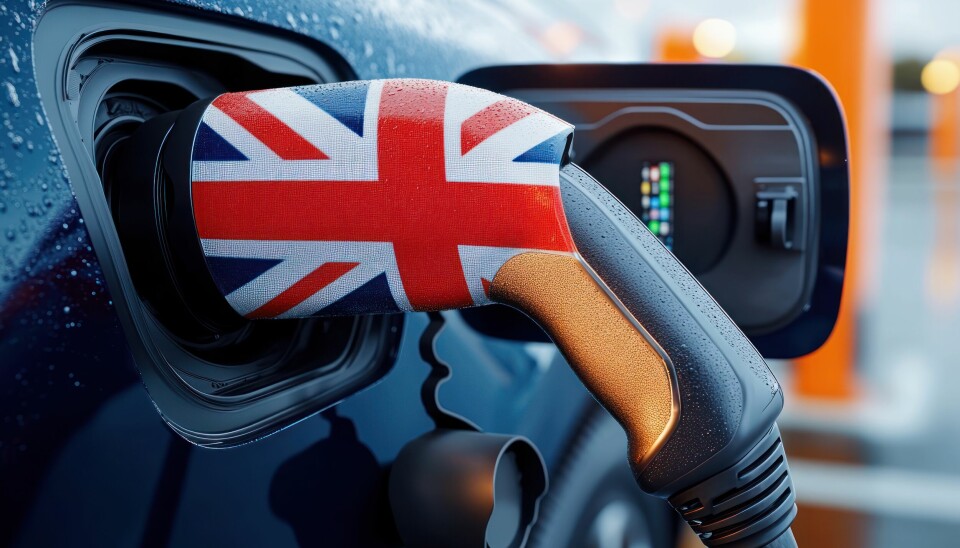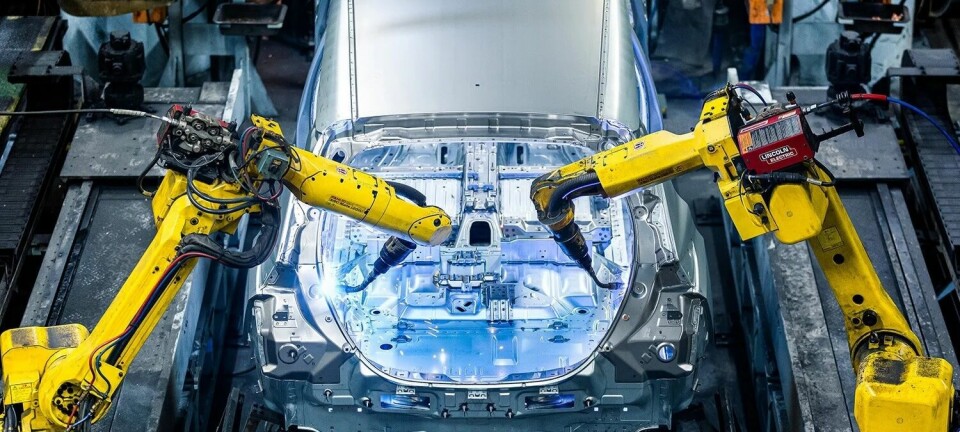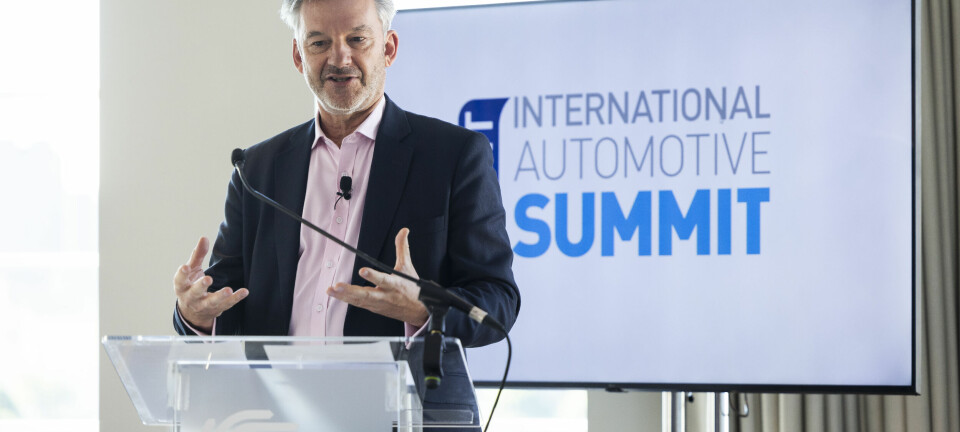EV subsidy tied to sustainability
UK’s £3,750 EV discount tied to supply chain emissions and battery production

The UK’s new £3,750 EV grant goes beyond tailpipe emissions, rewarding vehicles with low-carbon manufacturing and battery production. But with supply chain criteria still unclear, OEMs and logistics providers face major uncertainty ahead of key registration months.
A new UK electric vehicle (EV) grant offers up to £3,750 off BEVs priced under £37,000 - but with a twist. For the first time, eligibility depends not only on tailpipe emissions or vehicle type, but on the emissions embedded in its supply chain.
To qualify for the full or partial subsidy, OEMs must meet sustainability thresholds for vehicle and battery assembly, including use of low-carbon electricity and alignment with science-based climate targets. The aim: accelerate greener production and drive investment in local and European supply chains.
But with no official list of eligible models published yet, manufacturers and logistics providers are struggling to forecast demand ahead of the UK’s second-busiest vehicle registration month in September.
How the grant works: supply chain rules and eligibility tiers
The £650m EV discount scheme, launched by the UK Department for Transport (DfT), offers consumer subsidies of £3,750 or £1,500 for battery electric vehicles (BEVs) priced under £37,000 - but only if their production meets stringent supply chain sustainability criteria.
Unlike previous grants focused on tailpipe emissions or vehicle type, this scheme assesses carbon emissions embedded in the battery and final vehicle assembly, with an emphasis on electricity source and location.
To qualify for either tier:
OEMs must have approved Science Based Targets (SBTs) for reducing emissions, aligned with climate science and verified by the SBTi.
The vehicle assembly site – where the powertrain is integrated with the chassis – must operate in a low-carbon electricity grid.
The battery cell production site – where active electrode materials are processed and enclosed – carries the heaviest weight, counting for 70% of the vehicle’s total environmental score, versus 30% from vehicle assembly.
The DfT will assess emissions based on International Energy Agency (IEA) data on grid carbon intensity. Countries heavily reliant on renewable or nuclear energy are expected to score higher, qualifying for the £3,750 grant. Production in regions using coal or gas-heavy energy mixes may only qualify for the £1,500 tier, or not at all.
If production is spread across multiple sites or countries, carbon data must be submitted for each, and eligibility will depend on the combined score. A model with a green vehicle plant but a battery built in a high-emission country could be downgraded or excluded entirely.
The government plans to publish the list of eligible models by August 11, 2025, once its agreement with the IEA on data usage is finalised. Until then, OEMs remain in the dark about whether their vehicles - or competitors’ - will qualify.
Industry confusion clouds OEM strategy and logistics planning
Until the official model list is released, OEMs say they’re “operating in a fog,” unable to plan pricing, marketing or compliance strategies. The ambiguity risks undercutting preparations for September registrations, a critical sales window.
“Now you don't know whether your competitors are suddenly going to have a price advantage on you, in which case your plans are worthless,” said Mike Hawes, CEO of the Society of Motor Manufacturers and Traders (SMMT).
Hawes also warned the uncertainty could push OEMs into last-minute discounting to hit the UK’s Zero Emission Vehicle (ZEV) mandate, which requires 28% of new car sales to be electric in 2025, rising to 80% by 2030.
Risks of a two-tier market and production shifts
With battery sourcing accounting for 70% of a vehicle’s carbon score, the grant effectively creates a two-tier landscape - separating models built with low-emission supply chains from those that aren’t.
“Vehicles produced in countries more reliant on fossil fuels, including coal, will receive the lower band ranking,” confirmed the DfT.
This dynamic could quickly reshape pricing competitiveness, especially for Chinese-made EVs like MG, Nio, and Polestar. Despite meeting price caps, most are excluded due to China’s coal-heavy grids - making them ineligible for either grant tier.
“You could see a two-tier market emerge,” warned Hawes, with UK- and EU-assembled EVs gaining an edge over high-emission imports.
As a result, fleet buyers and consumers may delay decisions, waiting for confirmation on eligible models or manufacturer-led discounts. Some brands, such as Hyundai and Volvo, have already introduced temporary incentives to hedge uncertainty.
Still, many global OEMs face barriers - especially those reliant on Asian production, with no quick route to localisation.
Driving investment in UK EV supply chains
By tying EV incentives to embedded emissions, the UK is not just shaping demand - it’s signalling that how and where vehicles are built is now a national priority.
The approach aligns with the DRIVE35 strategy, which targets UK leadership in EV and battery manufacturing. According to Secretary of State Jonathan Reynolds:
“We are helping British carmakers get to the front of the pack by working hand-in-hand with investors to build a globally competitive electric vehicle supply chain in the UK.”
“Support for these projects encourages further investment in the UK’s growing zero-emission supply chain,” said Ian Constance, CEO of the APC.
The grant expires at the end of FY28–29 and carries a fixed £650m cap, raising concern about timing and long-lead investment returns.
“To establish a plant, get it up and running, and still hope there's some money left... That’s a big ask,” said Hawes.
R&D efforts may also struggle to scale quickly enough to displace high-emission imports - especially without coordinated industrial policy and access to low-cost, clean energy.
For logistics providers and supply chain leaders, the most immediate challenge is managing demand volatility and forecasting uncertainty - particularly for inbound EV volumes, charging infrastructure planning, and model-level compliance tracking.
For government and industry alike, the success of this initiative may ultimately depend on transparency, data sharing, and the pace of infrastructure and industrial investment.
“Consumers respond to carrots. This is a big carrot - but we need clarity, fast,” said Mike Hawes, speaking at the July SMMT production briefing.
The model list due on August 11 will be the next major test. Whether it brings clarity or further complexity will shape not only EV sales in the UK, but future investment decisions across the global automotive supply base.












